Post-rock is a form of experimental rock characterized by a focus on exploring textures and timbre over traditional rock song structures, chords, or riffs. Post-rock artists are often instrumental, typically combining rock instrumentation with electronics. The genre emerged within the indie and underground music scene of the 1980s and early 1990s. However, due to its abandonment of rock conventions, it often bears little resemblance musically to contemporary indie rock, borrowing instead from diverse sources including ambient, electronica, jazz, krautrock, dub, and minimalist classical.
Cul de Sac are a rock group formed in 1990 in Boston, Massachusetts and led by guitarist Glenn Jones. Their music is primarily instrumental. Jones and keyboardist Robin Amos have been the only constant members.

American primitive guitar is a fingerstyle guitar music genre, developed by the American guitarist John Fahey in the late 1950s. While the term "American primitivism" has been used as a name for the genre, American primitive guitar is distinct from the primitivism art movement.

I Am the Resurrection: A Tribute to John Fahey is a tribute album to guitarist John Fahey released in 2006. The album's title is taken from the title of the third track of his album The Transfiguration of Blind Joe Death.

Jack Rose was an American guitarist originally from Virginia and later based in Philadelphia, Pennsylvania. Rose is best known for his solo acoustic guitar work. He was also a member of the noise/drone band Pelt.

John Aloysius Fahey was an American fingerstyle guitarist and composer who played the steel-string acoustic guitar as a solo instrument. His style has been enormously influential and has been described as the foundation of the genre of American primitive guitar, a term borrowed from painting and referring mainly to the self-taught nature of the music and its minimalist style. Fahey borrowed from the folk and blues traditions in American roots music, having compiled many forgotten early recordings in these genres. He would later incorporate 20th-century classical, Portuguese, Brazilian, and Indian influences into his work.

The Voice of the Turtle is the seventh album by American guitarist John Fahey. Recorded and released in 1968, it is considered one of his more experimental albums, combining not only folk elements, but shreds of psychedelia, early blues, country fiddles, ragas, and white noise. The album had many reissues with various track listings, jacket designs and mismatched titles.

The Yellow Princess is the ninth album by American folk musician John Fahey. Released in 1968, it was his second and last release on the Vanguard label.
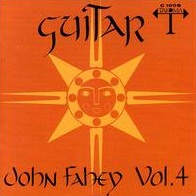
The Great San Bernardino Birthday Party & Other Excursions is an album by American fingerstyle guitarist and composer John Fahey, released in 1966. The cover simply labels the album Guitar Vol. 4 while the liner notes label it The Great San Bernardino Birthday Party & Other Excursions. The title never appeared on the record labels themselves. It marked the beginning of Fahey's interest in his recording of experimental soundscapes and sound effects. Despite Fahey's distaste for the 1960s counterculture, it is his release most often referred to as psychedelic.
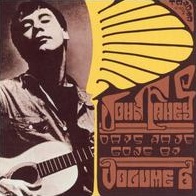
Days Have Gone By is an album by American fingerstyle guitarist and composer John Fahey, released in 1967. The cover labels the album Volume 6 while it was preceded in 1966 by The Great San Bernardino Birthday Party which is labeled Guitar Vol. 4.

John Fahey Visits Washington D.C. is an album by American fingerstyle guitarist and composer John Fahey, released in 1979.

City of Refuge is an album by American fingerstyle guitarist and composer John Fahey, released in 1997. It was his first original release in over five years and helped start his career resurgence.
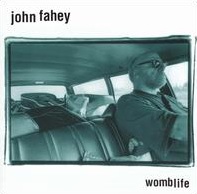
Womblife is an album by American fingerstyle guitarist and composer John Fahey, released in 1997. It was one of three releases by Fahey that year.

Red Cross is the 33rd and final studio album by American fingerstyle guitarist and composer John Fahey, released posthumously in 2003. The Revenant Records catalog refers to the album's title as Red Cross Disciple of Christ Today.
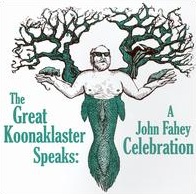
The Great Koonaklaster Speaks: A John Fahey Celebration is a tribute CD to guitarist John Fahey released in 2007.
Glenn Jones is an American guitarist, He is most recognized for his work in the experimental rock group Cul de Sac.

ECIM is the debut album of Cul de Sac, released in 1991 through Capella.
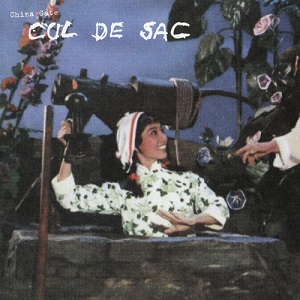
China Gate is an album by Cul de Sac, released in 1996. The album incorporated elements of surf rock.
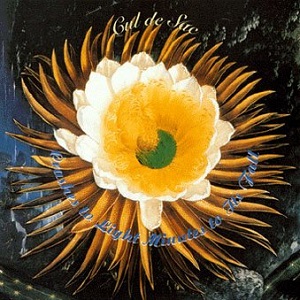
Crashes to Light, Minutes to Its Fall is the fourth album by Cul de Sac, released in 1999 through Thirsty Ear Recordings.
"Tuff" is a song written and performed by Ace Cannon, and was arranged and produced by Carl McVoy. It was featured on his 1962 album Tuff-Sax.















